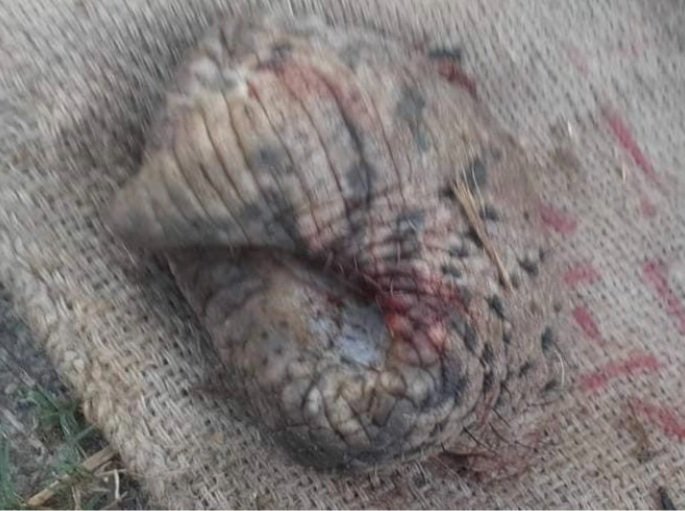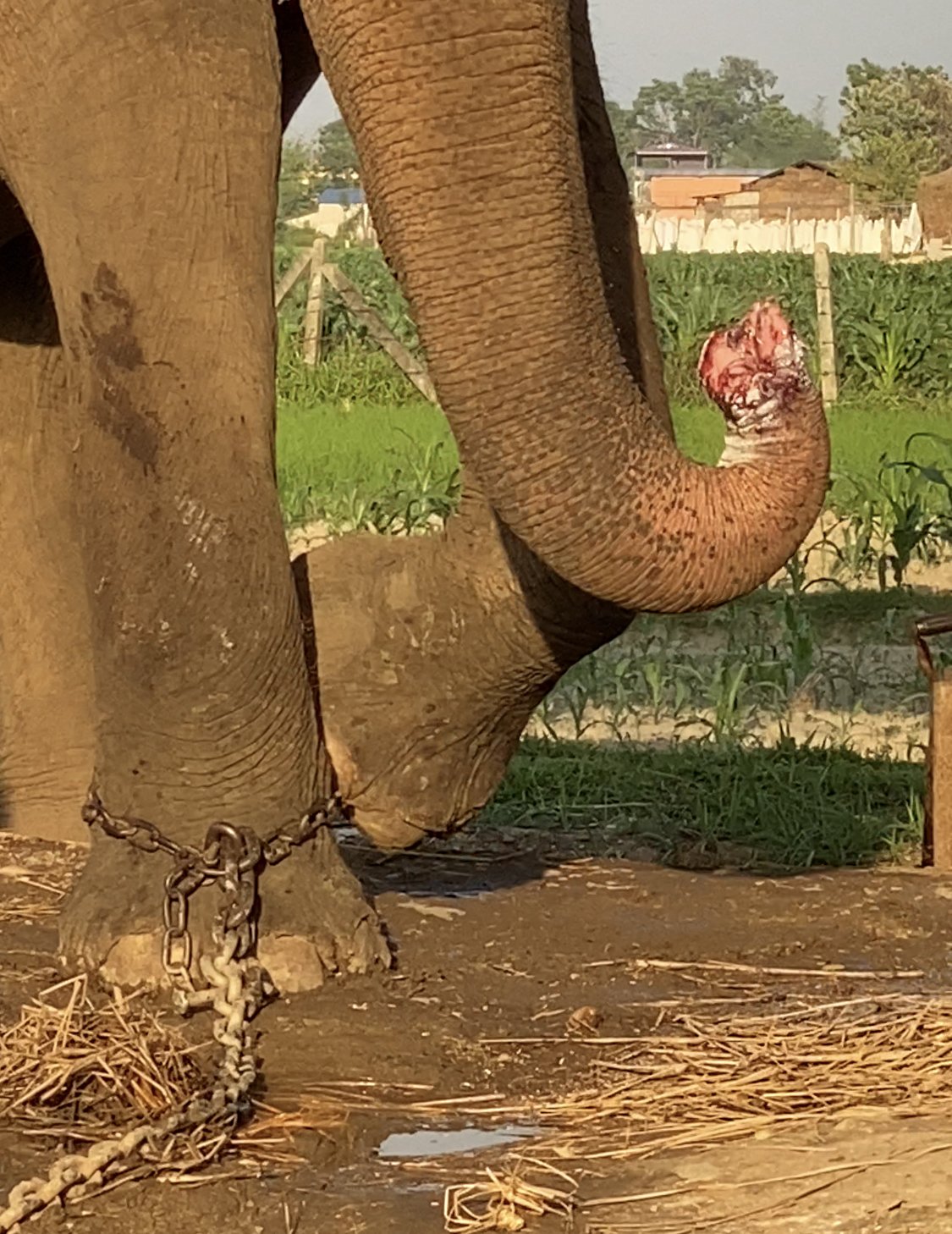Tourist Elephant Terrorized in Nepal
On April 4th, a working elephant in Sauraha, Nepal, was brutally terrorized in the middle of the night. Chanchal Kali was left in excruciating pain after having the end of her tail and trunk cut off. Since she, like most elephants in Sauraha, is chained during the night, she could not escape this attack. The inches severed from the end of her trunk were recovered; however, the culprit took the tail. Because of the parts targeted in the attack, elephant conservationists and activists are concerned that poachers could be to blame for the incident.
The Illegal Wildlife Part Trade
Captive elephants are targeted around Asia for parts that can be sold on the black market to fuel Eastern medicine practices. Many elephants in Thailand have their tail hairs pulled or the ends of their tails cut off to sell at a high price to buyers seeking endangered species parts. Similarly, the trunk tip is often smuggled to China to be used by Eastern medicine practitioners. These practices have significant impacts not only on species’ survival but on animal welfare as a whole.
While many elephants worldwide fall victim to the ivory trade and don’t live to recover from the trauma, others have their parts taken from them and left to suffer. Both outcomes are incredibly harmful and, unfortunately, rooted in human greed and misinformation.
As long as there are still consumers of these products, there will be those willing to supply the parts, whether the animal is left dead or alive. It’s vital to speak up against these practices and promote educational campaigns in the parts of the world where wildlife parts are being sold as medicine to do our part in ending these practices. Ultimately, the battle against poaching cannot be won unless it’s also being fought in the countries responsible for creating demand!
What Happened to Chanchal Kali?
Since there is no CCTV camera footage of the incident, we can only speculate exactly what happened the night of Chanchal’s attack. However, knowing how much an elephant’s tail is worth, it’s possible that whoever cut the tail was grabbed by Chanchal in response to the pain, and they cut her trunk to get away. Alternatively, since she is known as being a very dangerous elephant, the trunk may have been cut first to avoid any potential attack when cutting the tail.
Chanchal’s mahouts were sleeping during the incident and awoke to her making noise outside. As there are many wild elephants in the area, they stated that they were concerned it may have been a wild elephant and checked through a hole in their tin house to ensure there was no imminent danger outside. Once they confirmed no wild elephants were in the area, they went outside to see that Chanchal had been brutalized.
The elephant veterinary team arrived on the scene quickly to help slow the bleeding, clean her wounds, and provide her with pain medicine. While her physical wounds will heal, the trauma from this incident will always stay with her.
The Condition of Chanchal Kali
This specific case in Nepal has absolutely shocked the local community as this is the first attack of its kind in the region. The captive elephants in Nepal have long been safe from this brutality, and the thought that this could be the first of many attacks is genuinely terrifying. Both the Nepal Police and the anti-poaching unit are investigating the case and will hopefully be able to find and arrest the culprit(s) to hold them responsible for their actions. By making an example of those responsible for Chanchal’s suffering, officials can potentially deter others with similar ideas of making money off wildlife parts. Nepal cracks down hard on poachers, and this case should be treated no differently.
An elephant’s trunk is sacred to them as they use it to eat, drink, socialize, communicate, and interact with their environment. Without being able to use the trunk, an elephant is less able to defend themself or exercise autonomy. Chanchal is now being hand-fed by her mahouts because she cannot use her raw trunk. Unfortunately, she cannot drink water and has not accepted water directly from a hose in her mouth. Her owner has been supplying her with water-dense foods like sugar cane, fruits, and vegetables to ensure she does not get severely dehydrated during this challenging time.
While Chanchal will ultimately heal from her physical wounds, it will be a long and painful journey, and the trauma of being chained in place while attacked in such a brutal way will stay with her for the rest of her life.
The best thing you can do to help Chanchal on her healing journey is to share her story. No elephant should have to suffer from the physical and psychological trauma that she has, and the more awareness we bring to these atrocities, the more prevention we can implement.
We will continue providing updates about Chanchal’s condition; however, to receive more frequent updates, follow us on Instagram.
🐘 We're proud to partner with SafetyWing to provide travel insurance for ethical travelers.
When you use our affiliate link, you’re directly supporting our nonprofit’s work in wildlife welfare and ethical tourism.
Learn More & Get Covered






